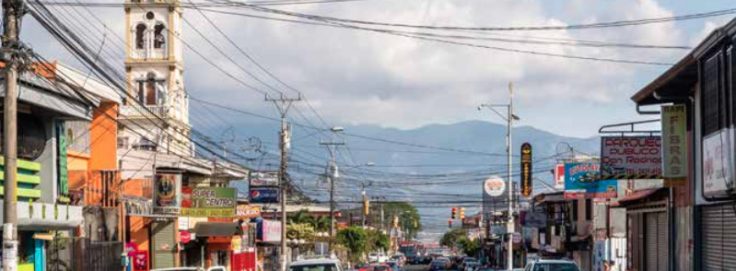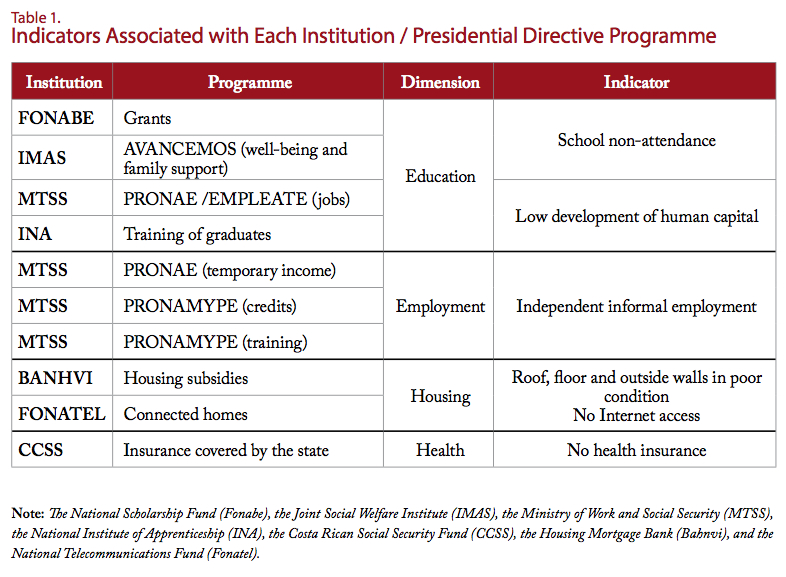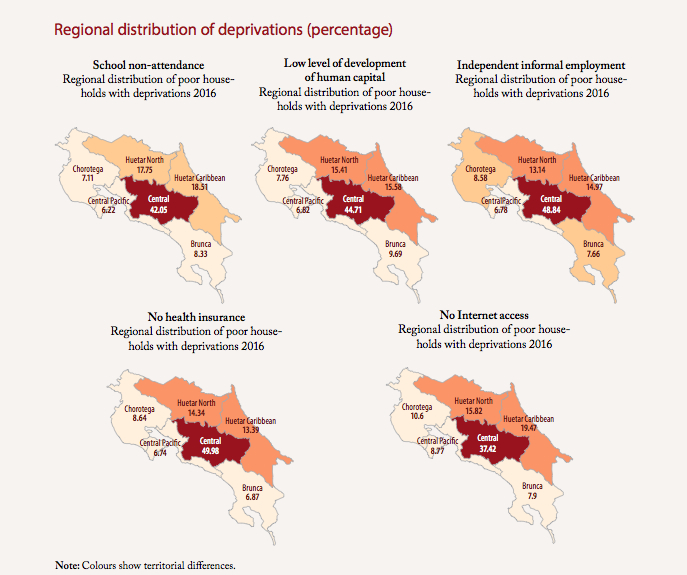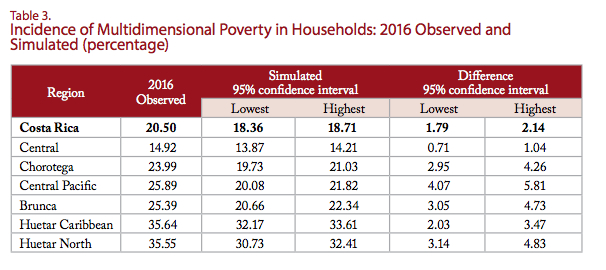
Search
The MPI as a Tool for Achieving Poverty Reduction Goals in Costa Rica

In July 2016, just nine months after launching the Costa Rica Multidimensional Poverty Index (MPI-CR), President Luis Guillermo Solís Rivera issued Presidential Directive N°045-MP. In this directive he called on ‘all heads and officials of ministries and institutions of the public social sector to use the Multidimensional Poverty Index as an official tool for measuring poverty, guiding the allocation of resources, and monitoring and evaluating social programmes’.
The directive also announced a pilot project to examine the 2017 programme budgeting process in greater detail, starting with the seven institutions that could have the greatest impact on multidimensional poverty reduction.
The selection of these institutions was primarily based on the identification of the highest contributing indicators to the MPI-CR, since those showing a greater proportion of households with specific deprivations are the most likely to contribute to improvements in the index. Therefore, among the 19 indicators that make up the MPI-CR, the following six indicators were identified as priorities (next to each indicator is the percentage of poor households with that deprivation in 2015):
- Low development of human capital (63%)
- No health insurance (63%)
- No internet access (50%)
- Roof, floor, and outside walls in poor condition, (43%)
- Independent informal employment (28%)
- School non-attendance (23%)
The next step involved the use of the Social Management Dashboard, which connects each MPI indicator with the relevant institutions. The table was used to identify seven institutions that would take part in the first budgeting exercise based on the MPI-CR. These institutions were The National Scholarship Fund (Fonabe), the Joint Social Welfare Institute (IMAS), the Ministry of Work and Social Security (MTSS), the National Institute of Apprenticeship (INA), the Costa Rican Social Security Fund (CCSS), the Housing Mortgage Bank (Bahnvi), and the National Telecommunications Fund (Fonatel).
A simulation exercise was carried out to see the potential impact that this work would have on the reduction of multidimensional poverty prior to the work of each institution in planning their budgets. The results of this exercise are the subject of this article.
How was this exercise carried out?
This theoretical work was carried out by a public-private partnership between the Costa Rican government and the Asociación Horizonte Positivo, supported by the consulting firm Cocobolo for statistical analysis. This analysis was done using a statistical simulation.
Considering the simulated scenario, the reduction in the number of poor households varied between 26,000 and 32,000 at the national level, which represents a very significant reduction.
The simulation considered the current poverty estimation based on data from the household survey carried out by the National Institute of Statistics and Censuses (INEC). This survey allows us to observe which deprivations are experienced by each member of every single household included in the national sample. The exercise simulates a reduction in the number of deprivations in some of these households (assuming that the state provides them with the benefits they need to no longer experience this deprivation) and re-evaluate the country’s multidimensional poverty rate.
In order to create the simulations, the main input required were the goals committed to by each institution for 2017. For this, a baseline was created using the National Development Plan 2015–2018 (PND) goals. The PND is a document that sets the actions and goals of each administration.
After the revision of the PND goals, an analysis of the historical trends in meeting goals by each of the seven institutions was conducted in order to refine the estimations. Finally, ten programmes for poverty reduction that could influence the six MPI-CR indicators were identified within the institutions involved. The details are presented in Table 1.
However, for the final model the subsidy for the Housing Mortgage Bank (Bahnvi) was excluded. For this reason, only nine programmes, six institutions, and five MPI-CR indicators were included.
In most cases, a potential increase in the number of beneficiaries for 2017 was used as an input in order to run the simulations. In others, the goal for that year was used as input. Furthermore, in order to capture the possible effect of poverty reduction in the six planning regions into which the country is divided, the regional distribution of beneficiaries according to the proportion of poor households with the associated MPI deprivation was taken into account. This distribution can be seen in the following maps.
Finally, the key assumption for the simulations was that all new benefits to be granted in 2017 would be effectively distributed to households identified as multidimensionally poor.
Results
Considering the simulated scenario, the reduction in the number of poor households varied between 26,000 and 32,000 at the national level, which represents a very significant reduction, as can be seen in Table 2.
In terms of incidence, namely the proportion of poor households, the results were as follows.
The simulation showed that the reduction in the incidence of multidimensional poverty would be extremely significant, with an overall reduction of at least 1.79%, a maximum reduction of 2.14%, and, in some regions, a reduction of over 4%. These results were presented to the involved institutions to motivate them and help them understand the real impact that the use of the MPI-CR would have as a planning tool for the achievement of poverty-related objectives.
The efforts made by the current government to introduce the MPI-CR tool, particularly with the Bridge to Development strategy, could help achieve the goals set by institutions. The resulting reduction in multidimensional poverty could substantially improve the daily lives of the nations’ poor and, eventually, profoundly benefit the nation as a whole.
Original in Spanish. Translated by Theodora Bradford.
Read 5th Dimensions Issue here.




















